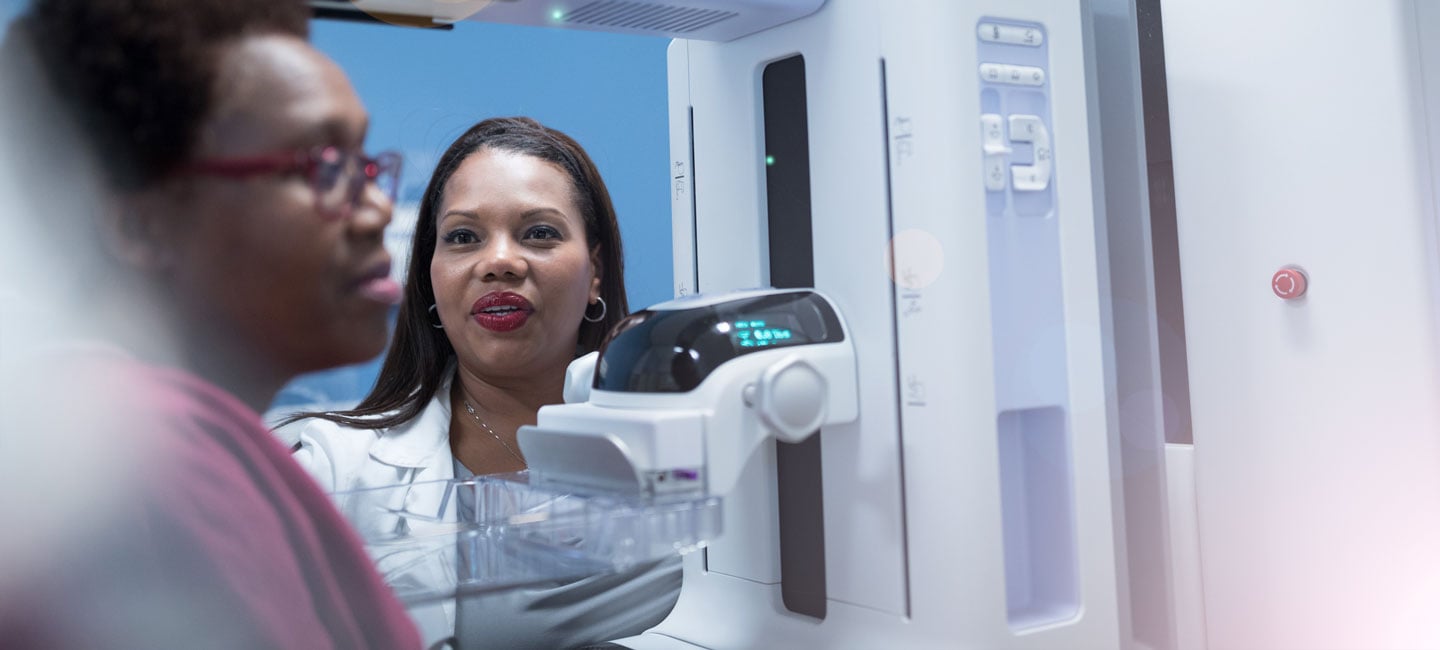Mammograms: Get in the Know
About 1 in 8 women will be diagnosed with breast cancer during her lifetime. If caught early, the disease usually has a good prognosis with appropriate treatment. The best line of defense is a screening mammogram.
What is a mammogram?
A screening mammogram is used to check for possible signs of breast cancer in women who do not have noticeable symptoms. A mammogram is performed with a machine that is specifically designed to create detailed X-ray images of breast tissue using compression and small doses of ionizing radiation.
Mammograms may reveal solid tumors, fluid-filled cysts and fatty masses that are otherwise unnoticeable, as well as clusters of calcium called macrocalcifications that may or may not be cancerous.

Dr. Bethany Niell, Section Chief of Breast Imaging
Moffitt Cancer Center also offers 3D mammography, also known as tomosynthesis, for screening and diagnostic purposes in all patients. 3D mammograms can find more cancers than traditional mammograms.
Women at increased risk of developing breast cancer may also qualify for an annual breast MRI in addition to a mammogram every year.
“At Moffitt, we encourage women to talk to their doctor about what screening tests may be best for them. Screening mammograms find breast cancers early, and early detection saves lives,” said Dr. Bethany Niell, section chief of Breast Imaging at Moffitt.
When Should I Begin Annual Screenings?
Moffitt, the National Comprehensive Cancer Network and American College of Radiology recommend annual (once every year) screening for women with an average breast cancer risk beginning at age 40. For those with a family history of the disease, you should speak to your doctor about starting routine screening even earlier.
In 2016, the U.S. Preventive Services Task Force issued controversial screening mammography guidelines. Congresswoman Debbie Wasserman Schultz has led the way to extend the provision of the Protecting Access to Lifesaving Screenings (PALS) Act in the Omnibus Appropriations Bill, and she has championed the PALS Act. These legislative efforts will ensure that women ages 40 to 49 continue to have access to screening mammograms with no co-pay. If unsuccessful, women ages 40 to 49 could lose access to breast screening coverage with no co-pay when the current moratorium expires on Jan. 1, 2024.
According to the American Cancer Society, more than 45,000 women 40 to 49 were diagnosed with breast cancer in 2019, and 22 million women between 40 to 49 could be at risk of losing coverage with no co-pay for mammograms.
“The different guidelines have caused confusion about when to begin screening mammograms. As a breast radiologist, my goal is to decrease the number of women dying from breast cancer,” said Niell. “We save the most lives by performing screening mammograms every year beginning at age 40 in average-risk women, but talk to your doctor about your breast cancer risk. Many women do not know that they are at increased risk of developing breast cancer. Women at increased risk may benefit from additional breast cancer screening options beginning as early as age 25.”
What Can I Expect During a Mammogram?
Most mammograms take about 30 minutes. You’ll be asked to change into a wrap in a private dressing area. An X-ray technician will then position each of your breasts in a mammogram machine, one at a time. While your breast rests on a fixed plate for support, an upper plate will gently compress it, which will allow for a more detailed image. Meanwhile, the technologist will use the machine to generate several images of your breast tissue. Some women find the compression to be a bit uncomfortable, but it typically does not hurt. If you’re concerned about discomfort, you can take an over-the-counter medication such as Tylenol an hour or two before your mammogram.
You should receive your mammogram results within a few days. Some referring providers will call regardless of whether the results are normal or abnormal, while others only call if a mammogram reveals something out of the ordinary. The breast imaging center will also send your mammogram results to you in the mail.



